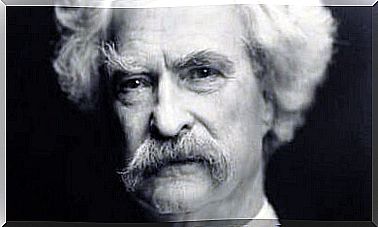Self-conscious Emotions: Guilt, Shame And Pride

Feeling ashamed when expressing an opinion, feeling guilty about what we once did, or being proud of an achievement. Any of the above examples correspond to a series of emotions in which there is a self-assessment and which, in the realm of psychology, have been called self-conscious emotions.
They are emotional states that have a series of common characteristics, but that also have some specific traits, depending on how behavior and attribution are evaluated.

Self-conscious emotions
In recent years, emotions have taken on a certain role. They are no longer the big forgotten ones, quite the opposite. However, we still have a lot to discover about them.
While it is true that currently there are many studies on basic emotions and emotional intelligence, the same is not true for those with greater variability and complexity, such as self-conscious emotions.
Despite everything, interest in this type of emotion has progressively increased and there are already theoretical models about them. Thus, according to the various studies carried out, self-conscious emotions share a number of important characteristics:
- They are secondary emotions. That is to say, they arise from the transformation of other, more basic emotions.
- They are complex emotions. It is necessary to have prior development of certain cognitive skills, such as a sense of self or self-awareness, that is, there needs to be a difference between the self and others.
- They are social emotions. They appear in interpersonal contexts.
- These are moral emotions. This type of emotion is the result of the internalization of cultural values, norms and criteria based on which is established what is correct and what is not at the behavioral level. Furthermore, they are fundamental as motivating and controlling elements of moral behavior along with empathy.
For example, guilt and shame are capable of inhibiting behavior considered immoral or facilitating those classified as highly moral. On the other hand, pride would be associated with a good deed and the reinforcement resulting from similar actions in the future.
Another important fact to take into account is that, despite these types of emotions being considered self-conscious, the various authors who studied them claim that the self-assessment performed does not need to be conscious or explicit.
Differential aspects of guilt, shame and pride
Despite the traits that self-conscious emotions share, there are also certain aspects that set them apart. Each one of them arises in the face of a specific event, has a particular subjective experience and involves a series of distinct behaviors.
Michael Lewis developed a model that explains self-conscious emotions based on two variables:
- The positive or negative evaluation of one’s behavior.
- The internal attribution (global or specific) made about the behavior.
According to the author, we evaluate our thoughts, feelings and actions as successes or failures according to a series of rules, standards and goals, both cultural and personal. From this, we create internal attributions, that is, we reflect on its origin and meaning.
If we consider that success and failure are due to our self as a whole, the internal attribution will be global, and if we consider that they are due to a determined thought, action or feeling, it will be specific. From there, one or another emotion would arise.
This entire process depends as much on cultural influences as on personal variables. For this reason, the same action can be considered a mistake by one person and a success by the other, and the same happens with the attributions, which can be global or specific depending on the person.
Below, we explain the main features of this type of emotion from Lewis’ perspective.
Guilt and shame, emotions with negative self-evaluations
When we feel shame, we make a negative assessment of the self on a global level. We want to hide or disappear because we realize we’ve been through something ridiculous and all we want to do is get rid of the malaise.
In fact, we feel a certain mental confusion, but getting rid of this emotional state is not as easy as repairing a certain action, so we resort to mechanisms such as forgetting and reinterpreting what happened.
On the other hand, guilt arises from a negative evaluation of the self, but at a specific level, that is, for a concrete action. We feel guilty about something we did, think, or feel, because we made a mistake.
However, in this case the action is not interrupted. Guilt leads to behaviors to repair the action and thus get rid of the emotional state experienced, as well as a reflection on how we will act in the future.
Lewis sees guilt as less destructive and more useful than shame because of the implication of corrective measures.

Pride and arrogance, emotions with positive self-evaluations
Pride arises from a positive assessment of the specific character’s self. When we feel proud, we feel satisfied by an action of our own. Because it is a pleasurable emotional state, it is very likely that we tend to try to reproduce it again.
Michael Lewis, in his explanatory model for self-conscious emotions, also referred to a personality disposition rather than an emotional reaction to refer to an exaggerated pride: arrogance.
It is an emotion that originates from a positive assessment at the global level, but is associated with narcissism in extreme cases.
When a person experiences arrogance, he is very pleased with himself. Therefore, it will try to maintain this state, although it is not so easy. In addition, it is often associated with a feeling of superiority, which is why it provokes the rejection of others.
Conclusions on Self-Conscious Emotions
What do we think about when we feel ashamed? To what do we attribute our pride or why do we experience guilt? Do we recognize the state of arrogance at some point in our lives?
As we have seen, if anything differentiates self-conscious emotions, it is the developmental process that characterizes them, related to self-assessment. This is something we can see in our daily lives when we experience them.
However, there is still a lot to study about this type of emotion, both on a personal and social level, such as, for example, the extent to which pride and arrogance are positive emotions and at what point they transform into emotional states with negative consequences.
The emotional universe is passionate, but it is complicated and, at times, mysterious, due to the fact that it is influenced by a large number of variables and aspects.
Still, it is essential to study it, as it facilitates the understanding and understanding of our essence, an additional contribution to complete the answer to one of our biggest questions: how do we work?








